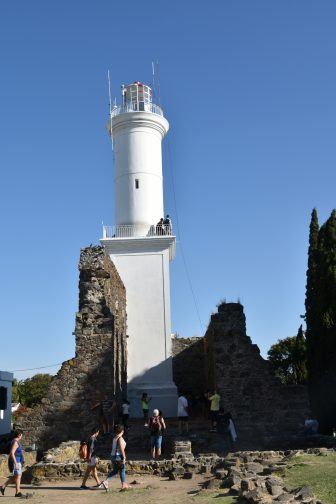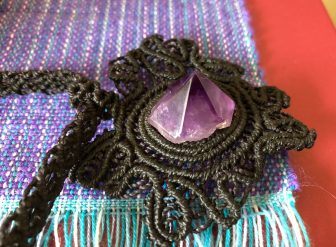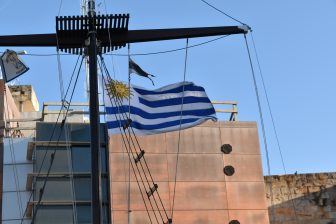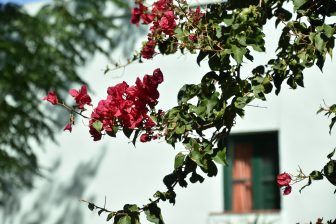
[ Mar.2018 ] To get straight to the point, the walking tour we had in Colonia del Sacramento in Uruguay was disappointing.
The voice of the guide was too quiet and it only lasted half an hour or so, even though the plan said one hour.
A family who joined at the start dropped out on the way.
Even so, we learned a few things about Colonia.
This town was established in 1680 by Portuguese settlers.
But 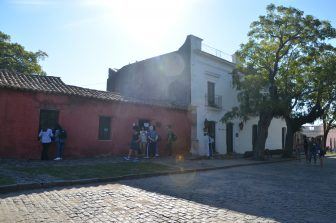
It changed 7 times apparently.
When it was under Portugal, they built stone houses with tiled roofs and when it was under Spain, they made brick houses with flat roofs.
We saw a scene with the two different types of houses standing next to each other.
Interestingly, the Spanish people did not use the Portuguese houses, but the Portuguese people did use the Spanish houses.
The oldest church in the town, Basilica del Santisimo Sacramento, was originally built by Portuguese settlers in 1680 and was a poor hut.
Depending on the rulers, it was then rebuilt again and again, so we could see that some parts were made of stone and other parts were brick.
The current building was built in the early 19th century and there are two towers, but in the past there were times when it had only one tower.
Colonia is on a peninsula.
There used to be a rampart from one riverside to the other.
However, according to our guide, “The not-so-clever president partly broke down the wall in the 19th century”.
It seemed that this stupid president is Gabriel Antonio Pereira, elected in the mid 19th century.
Apparently, he built the lighthouse in the middle of the ruins of a convent.
In fact, the scene was ridiculously unbalanced.
Colonia was listed in the Unesco World Heritage in 1995.
Until then, 680 families used to live in the old town, but now only 12 families live there.
That is because it became touristy and the property prices went up rapidly, so most of the owners sold their houses to developers.
Now, most of the properties are shops, hotels and restaurants.
Our guide said twice “This town is full of Argentinians. They say that it is nice, quiet and relaxing here. For us, this is normal”.
The tour finished quickly and after that we looked at some shops.
There was a small market, too, as it was a weekend.
Apparently the national stone of Uruguay is amethyst, although we did not see that many being sold.
But we bought one for a present and one for me.
In South America, they produce many gem stones, which makes me excited.
The 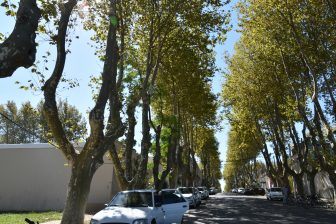
On the way to the port, we saw some lovely neat avenues outside of the old town.
By the way, the boat on the way back was smaller and it rocked a lot.
You must not underestimate the river.
I shut my eyes tightly to put up with it, which made me sleep deeply, so I could arrive back in Buenos Aires without any problems.

